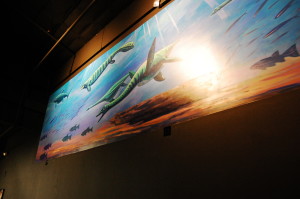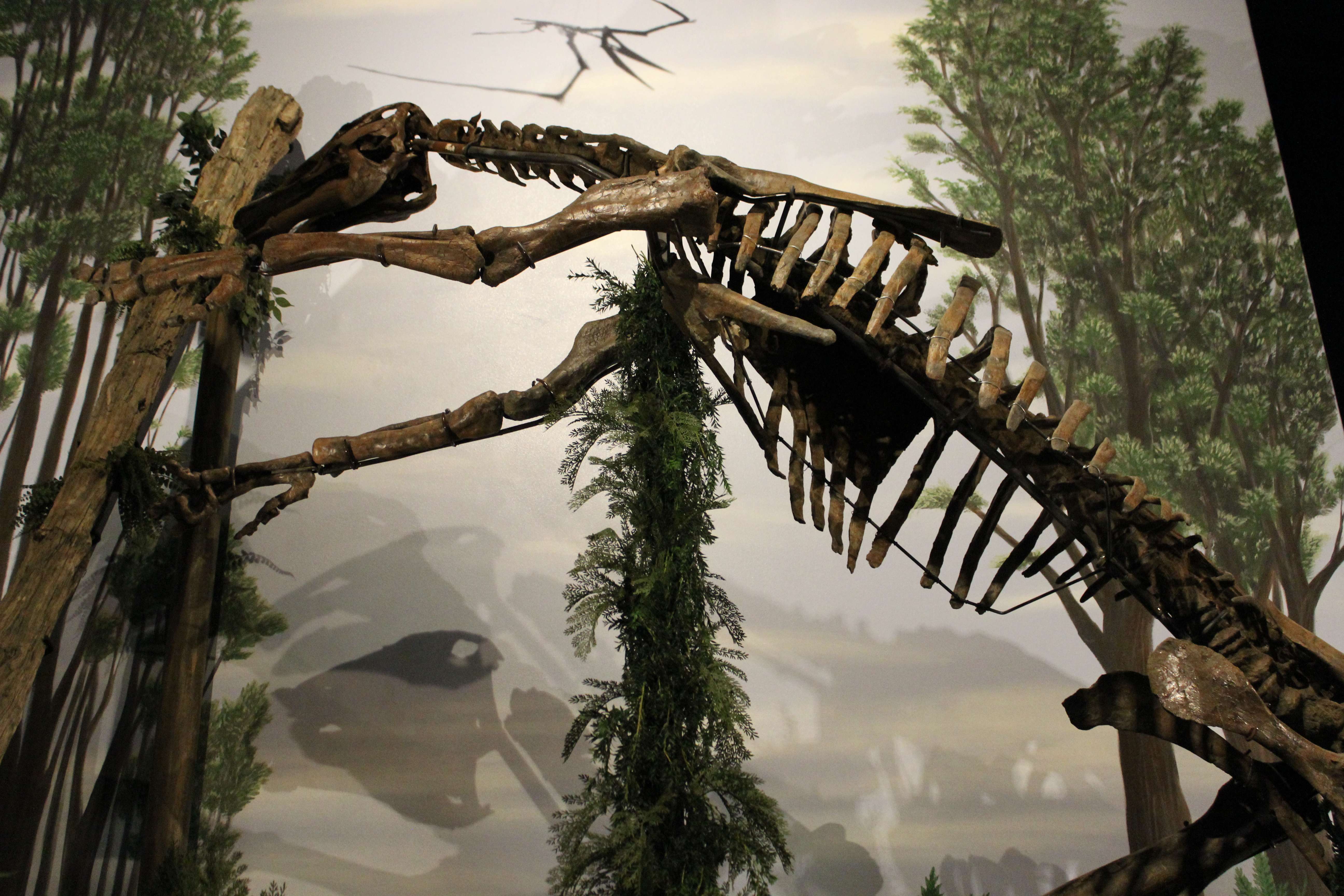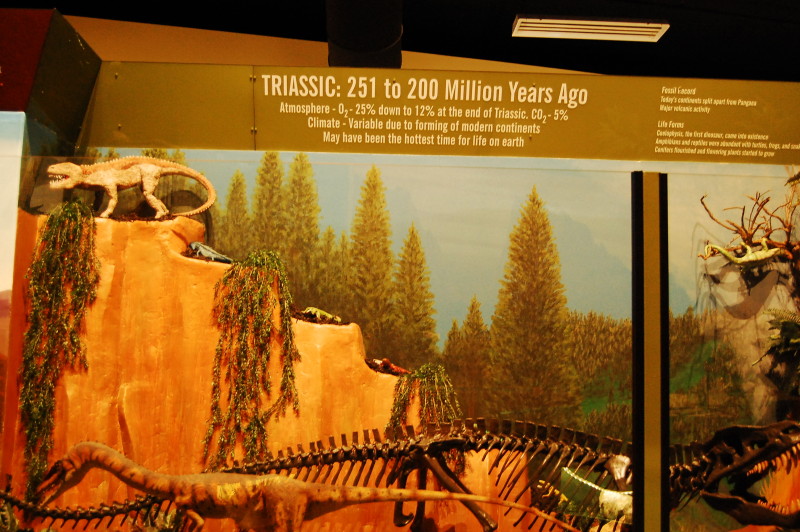The Plesiosaur was a marine reptile from the cretaceous period. In the mural you can see an illustration of a Plesiosaur and above the Gem room is a replica of the skeleton of a Plesiosaur. In the cases are fossilized bones of the Plesiosaur.
The Ichthyosaur is another marine reptile that lived during this time. It is represented in the mural on the wall. In the cases we have fossilized bones from this creature. Ichthyosaurs resemble dolphins and were the dominant aquatic predator until they were replaced by the Plesiosaurs.
The Mosasaur became the dominant ocean predator at the end of the Cretaceous after the extinction of the Ichthyosaurs and the decline of the Plesiosaurs. The Mosasaur represented in the mural on the wall and above the Gem room is a model skeleton of the Mosasaur. In the case we also have fossilized bones from a Mosasaur.
The Brachyceratops lived during the Cretaceous and is similar to the Triceratops. Only juvenile specimens have been found which limits the knowledge we have about these creatures.
It is believed that what ended the Cretaceous period and the Dinosaurs was a meteorite hitting the earth.
This caused severe consequences on the atmosphere. The Chicxulub crater found in Mexico is thought to be
the impact site of the enormous meteorite. The collision caused an impact winter that destroyed most plant life, which then led to the extinction of many dinosaurs due to a lack of a food supply. The meteorite we have here is similar to the one that hit the earth millions of years ago only much smaller.
The real meteorite here weighs 9 pounds and the model we have is an exact replica of the real one in the case.





